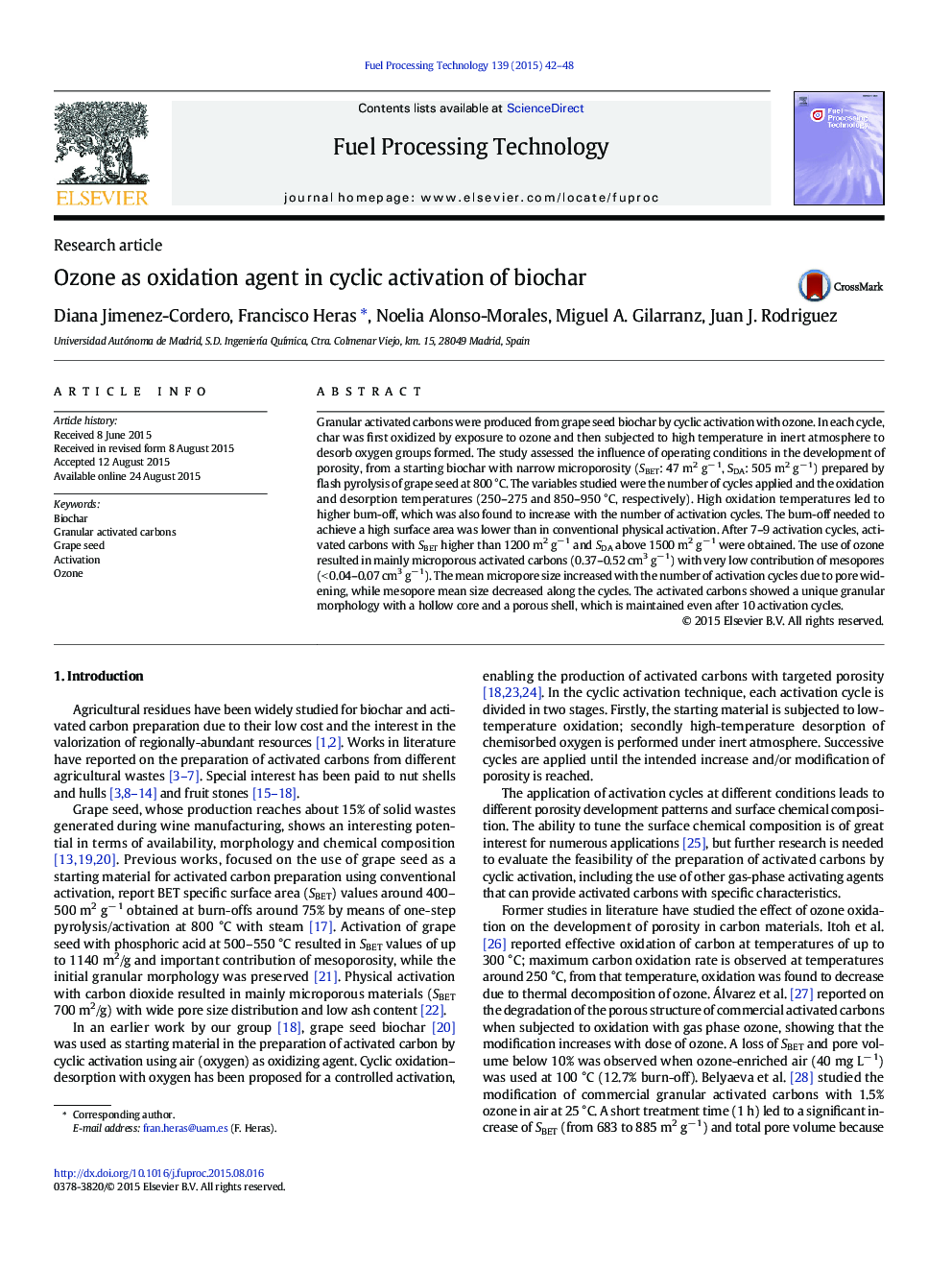| Article ID | Journal | Published Year | Pages | File Type |
|---|---|---|---|---|
| 209429 | Fuel Processing Technology | 2015 | 7 Pages |
•Tailoring of biochar porosity by ozone cyclic oxidation–desorption.•Microporous materials with low contribution of narrow mesoporosity (SBET 1200 m2 g− 1; SDA 1500 m2 g− 1).•Ozone generates new micropores during the whole activation process.•The granular morphology of biochar is preserved.
Granular activated carbons were produced from grape seed biochar by cyclic activation with ozone. In each cycle, char was first oxidized by exposure to ozone and then subjected to high temperature in inert atmosphere to desorb oxygen groups formed. The study assessed the influence of operating conditions in the development of porosity, from a starting biochar with narrow microporosity (SBET: 47 m2 g− 1, SDA: 505 m2 g− 1) prepared by flash pyrolysis of grape seed at 800 °C. The variables studied were the number of cycles applied and the oxidation and desorption temperatures (250–275 and 850–950 °C, respectively). High oxidation temperatures led to higher burn-off, which was also found to increase with the number of activation cycles. The burn-off needed to achieve a high surface area was lower than in conventional physical activation. After 7–9 activation cycles, activated carbons with SBET higher than 1200 m2 g− 1 and SDA above 1500 m2 g− 1 were obtained. The use of ozone resulted in mainly microporous activated carbons (0.37–0.52 cm3 g− 1) with very low contribution of mesopores (< 0.04–0.07 cm3 g− 1). The mean micropore size increased with the number of activation cycles due to pore widening, while mesopore mean size decreased along the cycles. The activated carbons showed a unique granular morphology with a hollow core and a porous shell, which is maintained even after 10 activation cycles.
